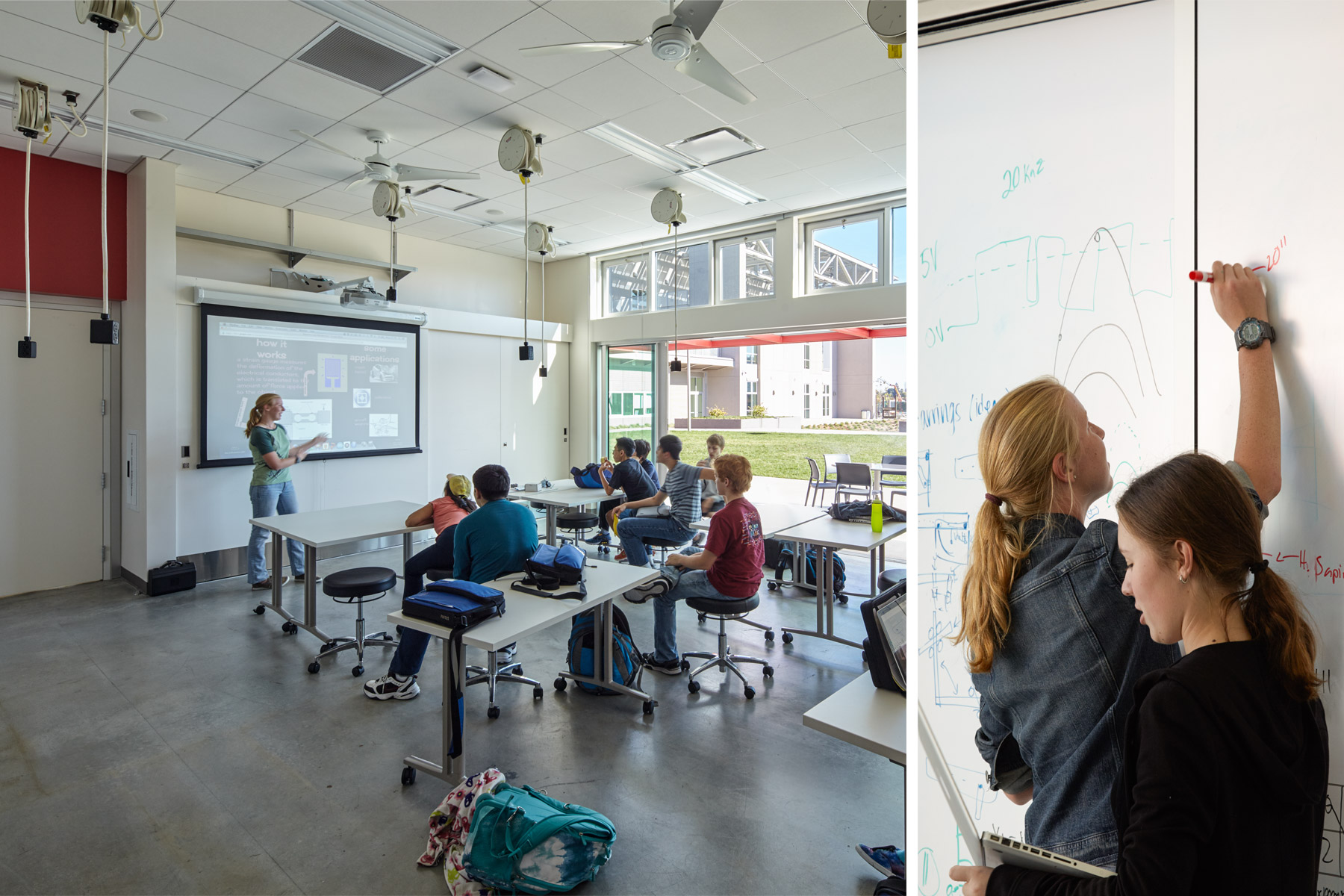
Preparing global learners and leaders of the future requires the development of strong anchors to “place” - a sense of belonging to, and responsibility for, our ever-changing world. Schools can provide this in a number of ways, including:
Connecting to climate: By engaging climate, schools connect students to the daily rhythms of the sun and the changing seasons unique to their place. Naturally ventilated buildings open to the cooling breezes; colorful sunshade elements protect the interiors from heat while they trace the movement of the sun on the walls; large sliding glass doors expand classrooms to the outdoors; rainwater runnels celebrate the rainy season while they reveal stormwater management strategies.
Organic gardens: It is well-documented that gardens where student can grow their own healthy food teach multiple lessons about nutrition, husbanding the earth’s resources, and the primal cycles of the seasons. A “Kitchen Lab” in the Dining Hall can give students the opportunity to transform their harvest into community-building meals for students and faculty.
Learning landscapes: In our increasingly urban and homogenized world, it is more important than ever to learn about the indigenous species unique to our communities. Interpretive landscapes can model diverse native ecologies for students, providing abundant opportunities for observation, appreciation and research.